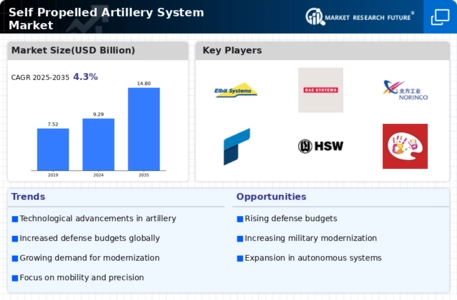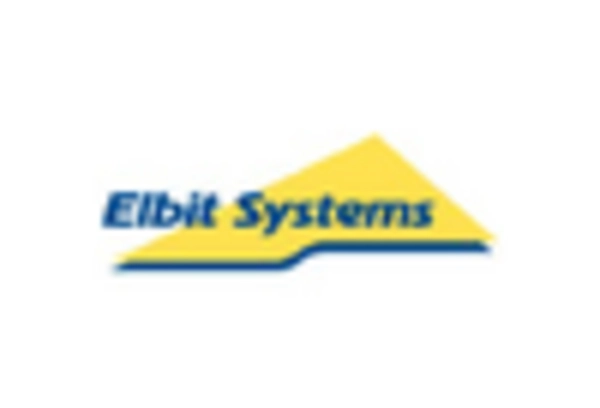Geopolitical Tensions
The Self Propelled Artillery System Market is significantly impacted by rising geopolitical tensions around the world. As nations face increasing threats from regional conflicts and military posturing, there is a heightened emphasis on strengthening defense capabilities. This environment has led to a renewed focus on artillery systems, particularly self-propelled variants, which offer mobility and rapid deployment. Countries are investing in these systems to ensure they can respond effectively to potential threats. The ongoing conflicts in various regions have further underscored the necessity for advanced artillery solutions, suggesting that the market will continue to grow as nations prioritize their military readiness.
Increased Defense Budgets
The Self Propelled Artillery System Market is significantly influenced by the increase in defense budgets across various nations. Governments are prioritizing military spending to enhance their defense capabilities, particularly in response to evolving geopolitical threats. According to recent data, several countries have reported a rise in defense expenditures, with some allocating substantial portions specifically for artillery modernization programs. This trend indicates a growing recognition of the importance of self-propelled artillery systems in contemporary warfare. As nations seek to bolster their artillery capabilities, the market for these systems is expected to expand, driven by both procurement and upgrade initiatives.
Technological Advancements
The Self Propelled Artillery System Market is experiencing a surge in technological advancements, which are enhancing the capabilities of these systems. Innovations such as automated targeting systems, advanced fire control systems, and improved mobility are becoming increasingly prevalent. These advancements not only improve accuracy and response times but also reduce the operational burden on personnel. For instance, the integration of artificial intelligence and machine learning algorithms is enabling predictive maintenance, thereby increasing the operational readiness of artillery units. As nations invest in modernizing their military capabilities, the demand for technologically advanced self-propelled artillery systems is likely to rise, reflecting a broader trend towards modernization in defense sectors.
Focus on Multi-Role Capabilities
The Self Propelled Artillery System Market is witnessing a shift towards multi-role capabilities, which is reshaping the demand landscape. Modern military operations require artillery systems that can perform various functions, including direct fire support, counter-battery operations, and reconnaissance. This versatility is becoming a critical factor for military planners, as it allows for more efficient use of resources and enhances operational flexibility. As a result, manufacturers are increasingly designing self-propelled artillery systems that can adapt to different combat scenarios. This focus on multi-role capabilities is likely to drive innovation and competition within the market, as stakeholders strive to meet the diverse needs of armed forces.
Emerging Markets and Defense Collaborations
The Self Propelled Artillery System Market is benefiting from the emergence of new markets and defense collaborations. Several developing nations are recognizing the need to modernize their military capabilities, leading to increased investments in self-propelled artillery systems. Additionally, collaborations between established defense manufacturers and emerging economies are facilitating technology transfer and local production. This trend not only enhances the availability of advanced artillery systems but also fosters economic growth in these regions. As partnerships expand and new markets open, the self-propelled artillery system market is poised for growth, driven by both domestic and international demand.


















Leave a Comment